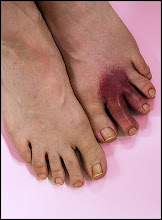Indelicate
Have been thinking, if that's the word I want, about the polar opposition of two things I love, and no, of course it's not that, we're all grown-ups here. I mean the arts and the sciences. Our pal Neal Stephenson, whose first volume I finished this morning with a sigh of relief and another of sorrow, because now I have only two more volumes to chew through, does a good job of showing (with caricatural excess, but n'importe) that in its infancy science was like stem cells, undifferentiated, so a savant would tackle astronomy today, dissection tomorrow, and semantics the day after. Everybody was a polymath, even if he couldn't do math at all.
But some were also poets, like Dryden, or well-placed bureaucrats, like Pepys. Wren was a great architect by any standard. It's true there's an ineluctable bimodality in human nature, but it's not absolutely given that science and art are opposites. One thinks of Leonardo and Michaelangelo and all those Italians stretching strings through pictures frames to learn perspective.
Still, art and science are opposites in some deep sense, though they may be the two sides of one coin. In particular, science is public. If an experiment can't be repeated, if the world at large can't view or taste or feel or smell the results, it's not science. Individual flashes of insight, as per LSD, don't make the nut. Whereas that's the very stuff of poetry and imagination. Nothing can be judged by an appeal to popular taste, which boils down to the lowest common denominator.
So I don't have a leg to stand on when I want to argue that (for want of better examples) some of my photos are better than good. For example, how about http://www.quinbus.net/gallery/06_january/060114153804_G, which to my way of thinking, or if that's not the word I want then my way of seeing, or being, is in some way almost perfect. Yet nobody else groks it that way. Furthermore...
Alas, at this point disgust overcame me. That usually happens when I think too long about esthetics.
Next morning.
In the bleak light of dawn – in fact, the bright light of a March morning with a high albedo, thanks to all the snow – I still think there's some depth in my maunderings. BS, maybe, but deep BS. The thing is, there's no metric for art. Science is based on metrics, which can be used to form and reject theories. Esthetics is the (doomed) attempt to find such metrics for the arts. If there are none, then one picture is as good as another, one poem no better than the next, and the only criterion for quality is popularity. Hemingway said those famous words to George Plimpton about the importance of having a case-hardened shit detector, but let's face it... Mark Twain thought his book about the Siamese twins was as good as "Huckleberry Finn." Hemingway himself let "Across the River and into the Trees" pass undected. And we all know about Shakespeare.
Maybe the only answer, if a writer or painter or whoever – a creative type who isn't on a salary – doesn't want to wake up glued in place like a fly on flypaper, is to forget about Art and grind out lots of stuff that seems OK to him, enjoying the process and trying to fob what comes out of him onto the public, swearing it's not shit. The lucky guys in my book are those whose art is dismissed as non-art by the arbiters who think they've found The Metrics. Cartoonists are a good example – maybe the best example going, since even moviemakers and photographers now routinely refer to their Art. (MGM's motto: "Ars gratia artis.") Nobody would promote Robert Crumb's stories as fine art, and if they did he'd just make fun of them.
Note to self: Hold that thought and follow that star. Remember what happened to your poetry.


0 Comments:
Post a Comment
Links to this post:
Create a Link
<< Home